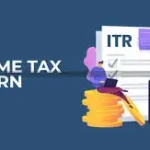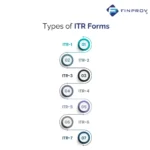
Employee salaries often include various allowances and reimbursements, some of which are subject to tax exemptions. The tax treatment of these allowances and reimbursements depends on whether the taxpayer opts for the old or new tax regime. Since the introduction of the new tax regime in FY 2020-21, individuals have to choose between lower tax rates with minimal exemptions or higher tax rates with various exemptions under the old regime.
Tax Treatment Based on Tax Regime
- Old Tax Regime:
- Advantages: Allows for various tax exemptions on allowances and reimbursements.
- Exemptions: A wide range of allowances and reimbursements can be partially or fully exempt from tax under this regime, subject to specific limits and conditions.
- New Tax Regime:
- Advantages: Offers lower tax rates.
- Disadvantages: Provides very few exemptions, including those for allowances and reimbursements.
Tax Exemption Limits for Allowances and Reimbursements Under the Old Tax Regime
1. House Rent Allowance (HRA):
- Exemption Limit: The least of the following is exempt from tax:
- Actual HRA received.
- Rent paid minus 10% of salary (basic + DA).
- 50% of salary (if living in a metro city) or 40% (if living in a non-metro city).
- Condition: HRA is exempted only if the employee lives in a rented house and the rent paid exceeds 10% of the salary.
2. Leave Travel Allowance (LTA):
- Exemption Limit: Exempt for travel expenses incurred on a trip within India, limited to two journeys in a block of four calendar years.
- Condition: Exemption is available only for travel and does not cover expenses such as food and lodging.
3. Special Allowances:
- Exemption Limit: Certain special allowances like those provided for duties performed in specific areas (e.g., remote locations) may be exempted under Section 10(14) of the Income Tax Act.
- Condition: These allowances must be for official duties and supported by relevant documents.
4. Medical Reimbursement:
- Exemption Limit: Up to ₹15,000 per annum is exempt under Section 10(14) for medical expenses incurred for self, spouse, and children.
- Condition: Requires submission of medical bills and receipts. With the introduction of the new tax regime, this benefit has been subsumed under the standard deduction of ₹50,000.
5. Telephone and Internet Reimbursements:
- Exemption Limit: Reimbursements for business-related telephone and internet expenses are exempt.
- Condition: Must be supported by bills and proof of expenditure.
6. Conveyance Allowance:
- Exemption Limit: Up to ₹1,600 per month is exempt under Section 10(14) for expenses incurred on travel between home and office.
- Condition: Applicable only if the allowance is used for the purpose of commuting to work.
7. Uniform Allowance:
- Exemption Limit: Allowance provided for purchasing uniforms required for employment is exempt.
- Condition: Must be used specifically for uniforms and supported by relevant documentation.
8. Other Allowances:
- Exemption Limit: Various other allowances like those for remote postings or specific duties may be partially or fully exempt based on their nature and use.
- Condition: The specific exemption limits and conditions for these allowances will depend on the nature of the allowance and its purpose.
Choosing the Right Tax Regime
When opting for the old tax regime, it is crucial to understand the limits and conditions for various allowances and reimbursements to accurately calculate taxable income and tax liability. If you prefer to benefit from the exemptions on allowances and reimbursements, the old tax regime may be more advantageous despite its higher tax rates. Conversely, if you do not claim many exemptions, the new tax regime’s lower tax rates might be more beneficial.
Make sure to review your allowances, reimbursements, and other tax benefits to choose the tax regime that maximizes your overall tax savings.
Related posts:
 Framework for Recognition of Self-Regulatory Organizations (SROs) in Financial Markets – Invitation of applications
Framework for Recognition of Self-Regulatory Organizations (SROs) in Financial Markets – Invitation of applications
 Union Finance Minister Smt. Nirmala Sitharaman chairs the review meeting of the Regional Rural Banks (RRBs) in New Delhi, today
Union Finance Minister Smt. Nirmala Sitharaman chairs the review meeting of the Regional Rural Banks (RRBs) in New Delhi, today
 US Fed must go big with 50 bps interest rate cut in September or risk recession
US Fed must go big with 50 bps interest rate cut in September or risk recession
 China’s spending slump is taking its toll on e-commerce giant Alibaba, which missed earnings estimates.
China’s spending slump is taking its toll on e-commerce giant Alibaba, which missed earnings estimates.
 How to Claim Your Income Tax Refund Online for FY 2023-24
How to Claim Your Income Tax Refund Online for FY 2023-24
 ITR Filing Forms for FY 2023-24 (AY 2024-25): How to Determine the Right Income Tax Return Form for You.
ITR Filing Forms for FY 2023-24 (AY 2024-25): How to Determine the Right Income Tax Return Form for You.